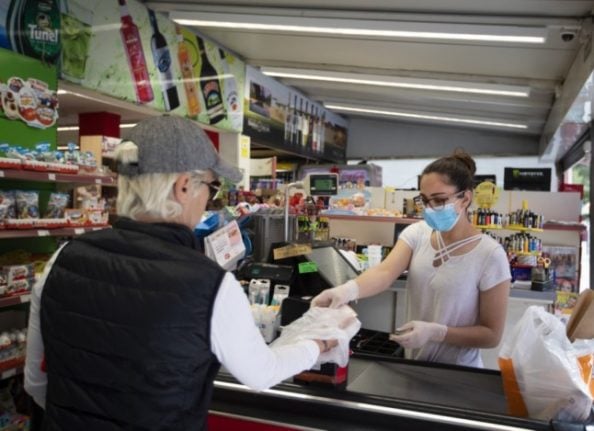Spaniards have been feeling the pinch of inflation in the last year. In October, electricity bills were sixty-three percent higher than the previous year, according to statistics from Spain’s Instituto Nacional de Estadística (INE). Spain’s Consumer Price Index (CPI) closed the year at 6.5 percent, fractionally lower than forecast but still the highest level in almost thirty years.
The inflation rate reflects the strongest rise in 29 years, a rise in prices that has been caused by rocketing fuel and electricity bills, and the direction of travel seems to be one way, unfortunately: the CPI has now experienced twelve consecutive increases.
But the latest INE figures published this week show that inflation is now being reflected in food and non-alcoholic beverages: prices were 5 percent higher overall in December 2021 than in the same month of 2020, the highest number since the 2008 financial crisis and ensuing recession that crippled the Spanish economy.
In the last year spanish consumers have faced the sharpest price increases of any major European economy, and they are now being felt in everyday items: olive oil is 26.7 percent more expensive than in December 2020, pasta 15.2 percent, soft drinks 11.7, fresh fruit percent 9 percent and fresh fish 6.6 percent.
Even poultry meat (6.5 percent), fruit juices (6.3 percent), eggs (6.2 percent), milk (5 percent), coffee (4.6 percent), and bread (3.8 percent) have seen slight price increases that will be felt in households across Spain.
Two more specific price increases that may concern some Spaniards more than others, however, are on beer and tobacco. Beer prices have risen due to an increase in the price of cereals, and it is believed that the government intends to increase tax incomes on tobacco by at least 5.5 percent.
In the last year food and beverage prices had been somewhat stable, and relatively unaffected by inflation, but since October they have increased from 1.7 percent to 5 percent to round out the year.
Looking forward, the economic forecast does not look promising: the core inflation rate – a metric which actually deducts electricity prices, a far more volatile product, from the calculation – is a measure used by economics to forecast whether short-term price rises are turning into structural ones.
This core inflation indicator reached 2.1 percent year-on-year in December , the highest rate since March 2013, and it represents the fifth consecutive month in which core inflation has risen.
Throughout the last year economists had hoped that the recent price shock would be transitory, and tied to the fate of the volatile utilities market, particularly the international natural gas price, but speaking last week, former Spanish Minister and now vice president of the European Central Bank, Luis de Guindos, suggested that inflation, and by extension, price increases, ‘may not be so transitory.’
According to a recent survey by the Bank of Spain, 60 percent of national companies plan to raise their prices in the coming year.



 Please whitelist us to continue reading.
Please whitelist us to continue reading.
Member comments